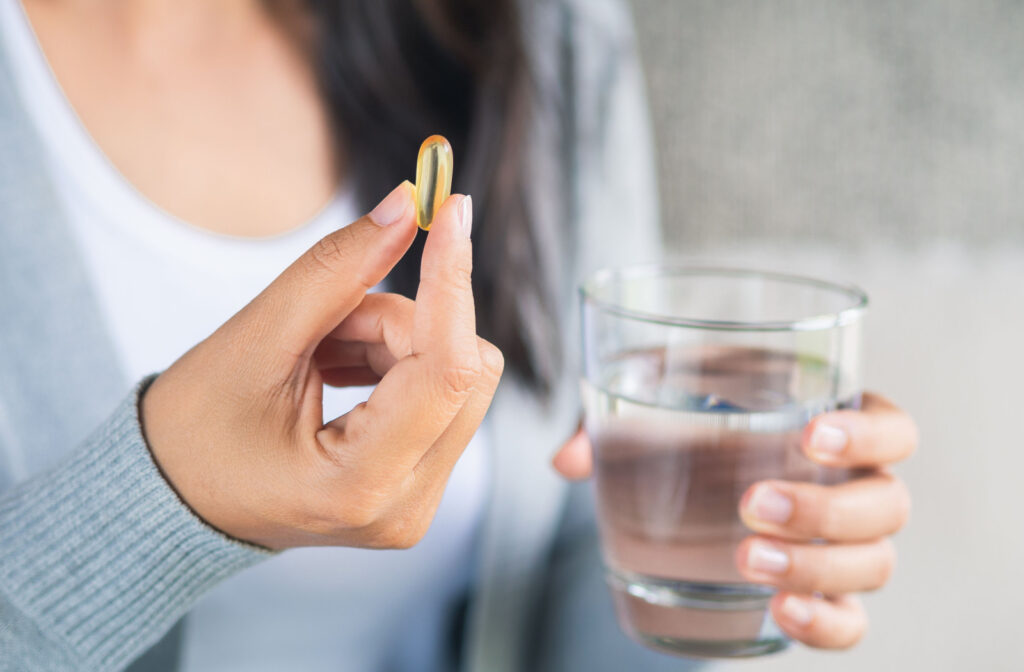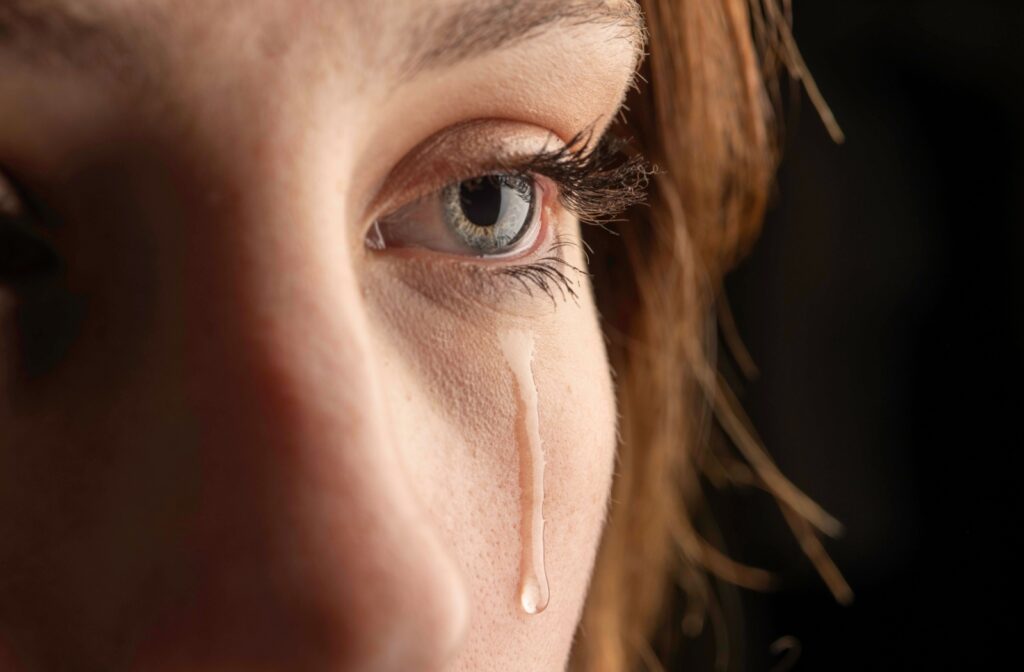Everyone has experienced a good cry, and that rush of tears can certainly make your eyes feel wet. You might be curious whether this flood of moisture is a natural remedy for the gritty, uncomfortable feeling of dry eye. While it seems logical, the answer isn’t as simple as you might think.
While crying provides a temporary wave of moisture, it’s not a sustainable or effective solution for chronic dry eye. True relief comes from understanding the cause of your dryness and taking consistent steps to support your eye health. Let’s explore the science behind your tears and find more practical ways to keep your eyes comfortable.
The Science of Tears & Eye Lubrication
Your eyes produce three different types of tears, and each one has a specific job to do. They work together as a team to keep your eyes comfortable and protected. Understanding their roles can help you understand why emotional tears alone aren’t the answer to dryness.
Basal Tears for Constant Moisture
Basal tears are the unsung heroes of your eye health. They are always present on the surface of your eyes, creating a stable film. This tear film lubricates, nourishes, and shields your cornea with every single blink you take.
Reflex Tears to Wash Away Irritants
When you get something in your eye—like dust or the fumes from chopping an onion—your body produces reflex tears. These watery tears are designed to act quickly. Their main purpose is to flush out debris and irritants to protect your eye’s surface.
Emotional Tears for Stress Release
Emotional tears appear in response to strong feelings like sadness, joy, or frustration. Their chemical makeup is different from basal or reflex tears. They may even contain stress hormones, which is why a good cry can sometimes feel like a release.
Crying & Short-Term Eye Comfort
Crying floods your eyes with moisture, which can provide a moment of relief from dryness. However, this effect is brief. It doesn’t address the underlying issues that cause chronic dry eye.
A Quick Rush of Moisture
The large volume of emotional tears can temporarily wash over your eye’s surface. This provides a brief sense of comfort, much like using a drop of artificial tears. However, once these tears dry, the scratchy feeling often returns.
How Too Much Crying Can Cause Puffiness
Frequent or intense crying sessions can sometimes do more harm than good. This can lead to puffy eyelids and irritation. The tiny glands in your eyelids can become overwhelmed, contributing to discomfort instead of relieving it.
What Worsens Dry Eye Symptoms
Several factors in your daily life can contribute to the discomfort of dry eyes. Paying attention to these common triggers is a great first step. You may find that small changes can have a big impact.
- Environmental conditions like wind, smoke, and dry air
- Extended time in front of digital screens
- Certain health conditions and medications
- Age-related changes in tear production
- Contact lens wear

Lifestyle Habits for Healthy & Hydrated Eyes
You can take simple, practical steps to support your eye health and improve moisture levels. These habits can make a noticeable difference in your daily comfort. Consistency is key to managing dry eye symptoms effectively.
Eat a Balanced Diet
Foods rich in vitamins and omega-3 fatty acids can support your overall eye health (though the direct benefits of fish oil supplements are sometimes debated). Think about adding items like salmon, walnuts, and dark leafy greens to your meals. A diet that’s good for your body is often good for your eyes, too.
Sip Fluids Throughout the Day
Staying hydrated helps your whole body, including your eyes. Drinking moderate amounts of water consistently is more effective than drinking a large amount all at once. Proper hydration supports healthy tear production from the inside out.
Practice Eye-Friendly Screen Habits
When you use a computer or phone, it’s helpful to follow the 20-20-20 rule. Every 20 minutes, look at something 20 feet away for at least 20 seconds. This gives your eyes a chance to rest and blink normally.
When to Schedule an Appointment With an Eye Doctor in Los Angeles
If home remedies and lifestyle changes don’t provide enough relief, it may be time for professional advice. Persistent discomfort is a sign to get your eyes checked. An eye care professional can help identify the root cause of your symptoms.
Persistent Dry Eye Signs
Pay attention to how your eyes feel on a daily basis. If you experience any of the following signs regularly, it’s a good idea to schedule an eye exam.
- A gritty or scratchy feeling
- Redness and irritation
- Blurred vision
- Light sensitivity
- Watery eyes
Your Comprehensive Eye Health Exam
As your eye doctor in Los Angeles, we can perform a thorough exam to understand the cause of your dry eyes. We can also review your health history and use specific tests to check your tear production and quality. This helps us create a personalized approach to help you find comfort.
While a good cry can offer emotional release and a fleeting moment of moisture, it’s not a solution for persistent dry eye. True, lasting comfort comes from proactive care, healthy habits, and professional guidance. Understanding your eyes is the first step toward keeping them healthy and hydrated.
At Pacific Eyecare Optometry, operated by Total Vision, we dedicate ourselves to your vision health. If you’re struggling with dry, uncomfortable eyes, we can help. Schedule an appointment with us today to find a path toward clearer, more comfortable vision.



